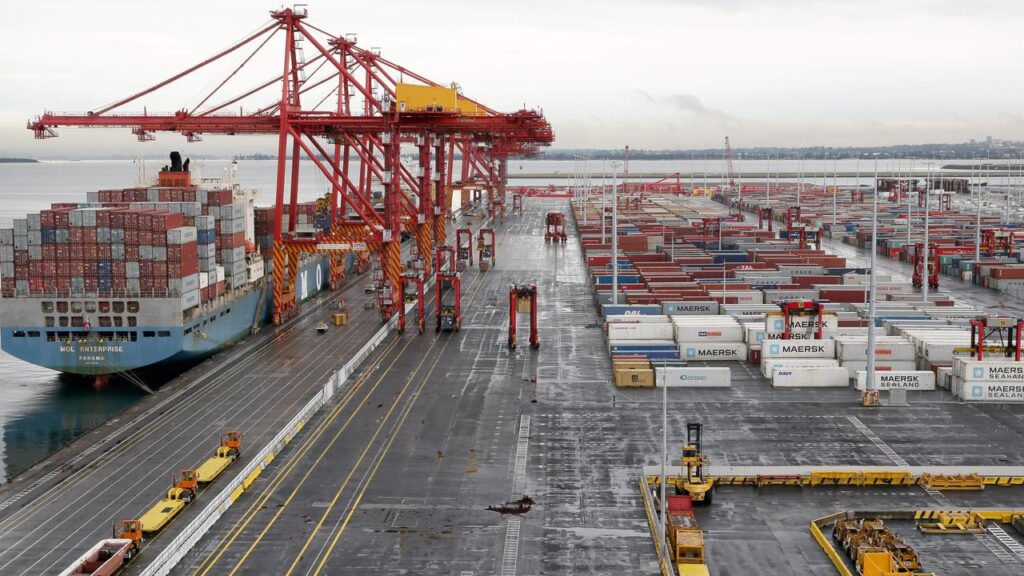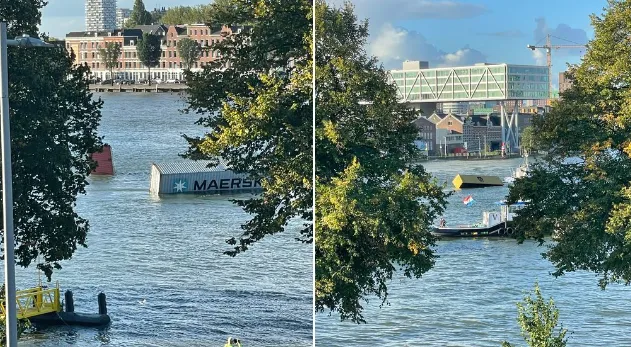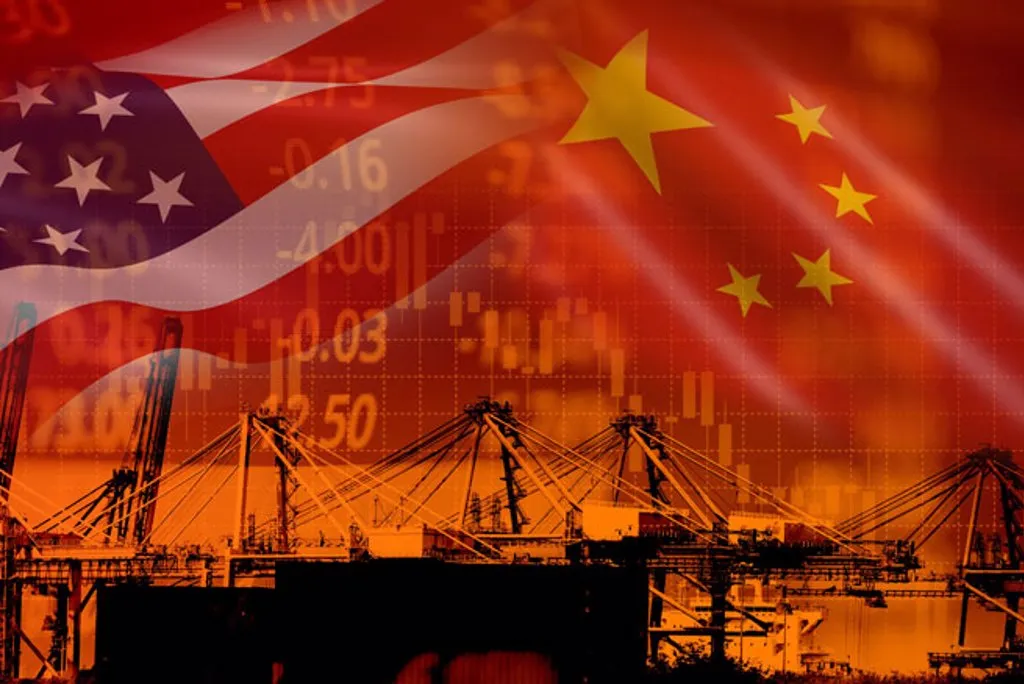Your Premier Partner for China-Europe Rail Freight
inkway would be the best partner you can find if you are looking for a highly qualified rail freight forwarder to move your goods. Enjoy cost-effective and secure shipping by working with us.
Rail Freight is more expensive than Sea Freight
But still cheaper than Air freight
This mode of transportation is perfectly suited to high-value industrial products such as vehicles, electronics and computer equipment, as well as promotional and seasonal products that must reach their final destination as quickly as possible.
China to UK
Use this space to add a short description. It gives enough info to earn a click.
China to Germany
Use this space to add a short description. It gives enough info to earn a click.
China to France
Use this space to add a short description. It gives enough info to earn a click.
China to Rest of Europe
Use this space to add a short description. It gives enough info to earn a click.

Contact Linkway Freight
for Best Rate
What is the China Europe Railway Express?
The China-Europe Railway Express, or China Railway Express (CRE), is a network of international multimodal container rail services that connects cities in China with cities in Europe. It provides overland transportation for cargo, bypassing the traditional maritime routes that typically connect these two regions. It is part of China’s Belt and Road initiative and since its launch in 2013, the project has expanded to Asia, Africa, Oceania, and Latin America.
For many shipping companies, the China-Europe Railway Express has become a more reliable alternative for transporting via sea – as the CRE is faster and more cost-efficient. Let’s take a detailed look at the routes it covers.
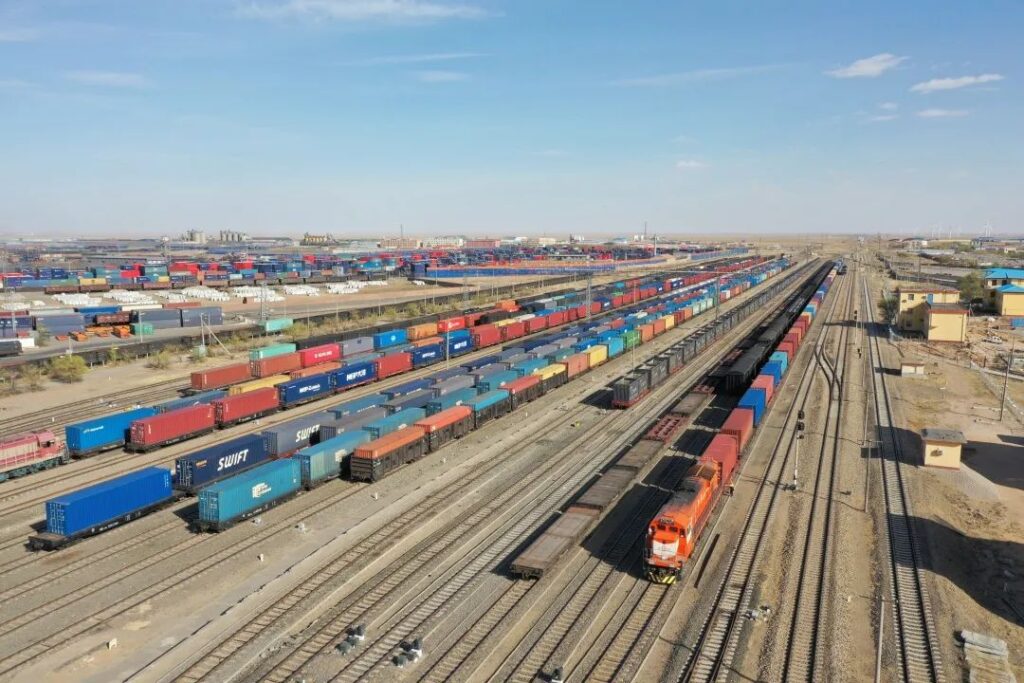
Rail station of departure in China for rail freight service
The China-Europe Railway Express (CRE) operates along three major corridors: the eastern, central, and western routes.
-The eastern route primarily serves Chinese exports from coastal regions, notably Yiwu in eastern Zhejiang province. It exits China through Manzhouli in Inner Mongolia, traverses Russia, and enters Europe via Belarus and Poland.
-The central route is dedicated to goods produced in central China and the southern coastal provinces like Guangdong, a manufacturing hub. It enters Mongolia through Erenhot in Inner Mongolia, crosses Russia, and then reaches eastern and western Europe.
-The western route primarily facilitates exports from western China, entering Kazakhstan via Alashankou or Khorgos in the Xinjiang Uygur Autonomous Region before extending further into Europe. Most of these routes pass through Russia, Belarus, and Poland, with a few trains also transiting through Ukraine en route to Hungary.
- What is the China Europe Railway Express?
- Rail station of departure in China for rail freight service
- China Europe Railway Express route
- Major destination for rail freight from China
- Transit time and rail freight rates from China to Europe
- Rail freight comes with 3 main advantages :
- China-Europe Railway Freight
- An alternative to air and sea freight
- New freight train from China to Europe
- Why choose rail freight service for shipping from China to Europe?
- Necessary Documents For a Rail Freight Quotation
- Insurance in rail freight service
- Restrictions in Rail Freight Service
- A very popular means of transport with multinationals
- Questions about Railway Freight from China
- You may also like
China Europe Railway Express route
Choosing the right rail station of departure for rail freight services in China depends on a few factors:
- Location of the Goods: Ideally, the departure station should be close to the location of the goods to minimize transport costs and time.
- Rail Network: The rail station should have robust connections to the destination and the broader rail network.
- Nature of the Goods: Some stations may have specialized facilities for handling certain types of goods, so the nature of your goods could affect the choice of departure station.
- Shipping Frequency: The frequency of freight trains from the station to the destination could affect the timing of your shipment.
Here are some major rail stations in China commonly used for rail freight departures:
- Beijing Railway Station: Located in the capital city, it’s a key hub with domestic and international connections.
- Shanghai Railway Station: This station serves a lot of traffic due to its location in one of the world’s busiest ports and has extensive rail connections.
- Chengdu Railway Station: This station is a crucial part of the Belt and Road Initiative, with services connecting to Europe. It’s a good choice for shipments from the central and western parts of China.
- Chongqing Railway Station: Another important hub for the Belt and Road Initiative, Chongqing has frequent services to Europe and other parts of Asia.
- Shenzhen Railway Station: Located in the Guangdong Province, this station serves the Pearl River Delta area and connects to the rest of the country.
- Zhengzhou Railway Station: This station is strategically located in central China and has rail connections to Europe, making it a good choice for shipments from central and northern China.
- Yiwu Railway Station: Yiwu in Zhejiang Province is known as the world’s “supermarket,” and its railway station has connections to Europe, Central Asia, and the Middle East.
Keep in mind that the right choice of rail station will depend on the specifics of your shipment. At Linkway, we can help you select the best station based on your requirements and provide seamless, reliable rail freight services.
10 major rail stations in China
here is a list of 10 major rail stations in China that have rail freight service from China to Europe. Please note that the specific locations are subject to change and should be verified with the local authorities or your freight forwarder.
| Rail Station | City | Location |
|---|---|---|
| Zhengzhou International Land Port | Zhengzhou | Henan Province |
| Wuhan Railway Container Terminal | Wuhan | Hubei Province |
| Yiwu Railway Station | Yiwu | Zhejiang Province |
| Chongqing Railway Station | Chongqing | Chongqing Municipality |
| Chengdu Railway Station | Chengdu | Sichuan Province |
| Xi’an International Inland Port | Xi’an | Shaanxi Province |
| Shenyang Railway Station | Shenyang | Liaoning Province |
| Changsha South Railway Station | Changsha | Hunan Province |
| Guangzhou South Railway Station | Guangzhou | Guangdong Province |
| Shanghai Railway Station | Shanghai | Shanghai Municipality |
These stations are significant hubs for the rail freight service from China to Europe and play crucial roles in the China-Europe Railways, which is a part of the Belt and Road Initiative. Please note, the availability of services and schedules may vary, and it’s always a good idea to confirm the details with your freight forwarder or the station itself.
Major destination for rail freight from China
Rail freight from China reaches a wide array of destinations across Asia, Europe, and beyond. Here are some of the major destinations for rail freight services from China:
| Destination | Region |
|---|---|
| Moscow | Russia |
| Hamburg | Germany |
| Warsaw | Poland |
| Madrid | Spain |
| Tehran | Iran |
| Duisburg | Germany |
| Rotterdam | Netherlands |
| London | United Kingdom |
| Minsk | Belarus |
| Almaty | Kazakhstan |
| Brest | Belarus |
| Budapest | Hungary |
| Milan | Italy |
| Paris | France |
| Vienna | Austria |
This list is not exhaustive as the exact destinations can depend on the rail freight service provider and the specific requirements of the shipment. It’s worth noting that the freight often continues by road or other modes of transport to reach its final destination if it’s not directly connected by rail.
At Linkway, we offer extensive rail freight services covering a wide range of destinations. We ensure that your freight reaches its destination reliably and efficiently. Our team is experienced in managing the complexities of international rail freight, providing you with a seamless and stress-free shipping experience.
Transit time and rail freight rates from China to Europe
Rail freight: Transit time
As an example:
- China – Lyon (France): 14 ~ 17 days
- China – Brussels (Belgium): 12 ~ 14 days
- China – London (UK): 18-20 days
Rail freight from China throughout Europe
In recent years, China Railway has shipped freight through the famous Silk Road railway that connects 12,000 kilometers of track via the Trans-Siberian Railway.
An exciting project has just been set up: the first train from Yiwu to London (Barking in East London). He left on the 1st of January and arrived at destination on the 18th of January, which represents an average transit time of 18 days to get to London, more than the 15 days to get to Lyon. As a reminder, keep in mind that a container needs at least 30 days to reach the French ports.
This new service which is offered both for importers and exporters allows to ship to and from China in a fast and cost-effective way.
Note Linkway:This service represents a potential direct saving of 50% compared to an importation from China by air freight. It represents also a time saving of 12 to 14 days compared to sea freight.
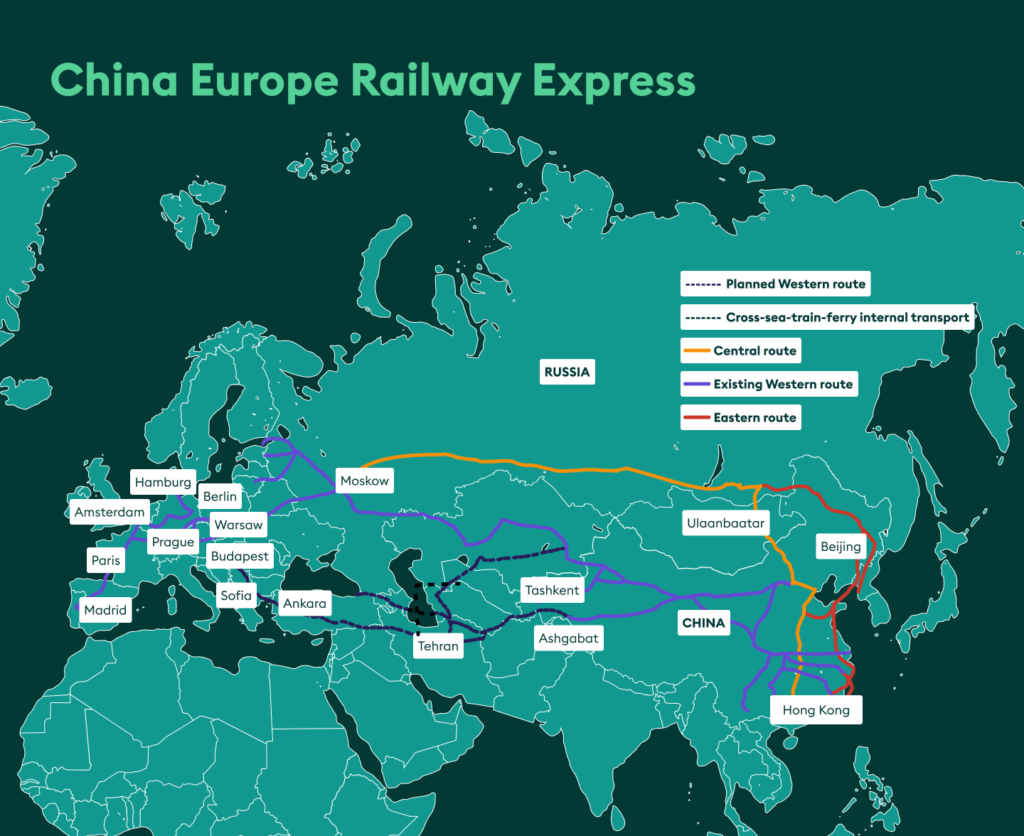
CHINE – EUROPE: The longest railway in the world !
As you can see from the map below, the China Europe railway does not travel along a single route. It is a network of railways that spans over the two continents – departing from China, passing through Central Asia and finally arriving in western Europe – mirroring the ancient Silk Road.
China-Europe Railway Express trains are now running on 73 routes, connecting more than 50 cities in Mainland China with 217 cities in 25 European countries.
Rail freight comes with 3 main advantages :
1) Time and Cost Savings
The cost of rail freight from/to China is potentially 50% cheaper than air cargo for the same trip. The transit time is 45% to 50% shorter, as compared to sea freight transport.
2) Quicker customs procedures
Customs declaration and inspection can be proceeded much more quickly than in the case of air or traditional sea freight. This customs service is available in the form of a full service 24/7, handled by our team present in China.
3) Flexible and multiple services
A wide variety of goods is accepted for transportation and the services offered include: door-to-door deliveries, FCL and LCL.

Not a boat, not an airplane, but a train. The first freight train from China to the United Kingdom is now running. This new route of silk used by the intercontinental train is a new means of transport between the two continents and offers many advantages.
The main benefits of this option is its short delivery time and obviously the lower costs it offers. Indeed, the delays provided by rail freight are way shorter than sea freight and less expensive than air transport.
China-Europe Railway Freight
An alternative to air and sea freight
In recent years, the rail link between Germany and China has become a wise choice for customers concerned about delays and costs. As China’s economic power keeps on increasing, some French companies have decided to implement their production facilities there, benefiting from the booming Chinese market – this is why there is a high demand for railway freight.
Railway Freight is a perfect option for customers who need to deliver components and industrial products from France, Switzerland or Belgium to China, and vice versa. In addition, the two railways present on the Eurasian Land Bridge serve destinations in Russia, Kazakhstan and Mongolia.
The continued expansion of the rail network in China and the further simplification of customs procedures reinforce the importance of a direct rail link, as trade between Europe and China is growing.
Characteristics of railway freight
- Routes from China – Europe, China – Russia, as well as Germany – Japan and Germany – South Korea via Zhengzhou are operated in both direction
- So the cost of rail transportation is 50% lower than air freight and the transit time is 50% shorter than ocean freight
- The shipping cost for EXW to DDU China – Germany (Europe) and small LCL (1-4cbm) are more or less the same as sea freight
- Customs clearance is available 24/7!
- Door to door service & distribution network in Europe and China
- Container types: 20’GP, 20’HQ, 40’GP, 40’HQ, 45’GP, 45 ‘refrigerated container, clothing suspension container, open container
- To safe, stable, non-stop, fast
Currently, four weekly container train services from Duisburg and three weekly services from Hamburg serve China, in addition to the regular services from Wackersdorf and Leipzig-Wahren.
The new service from Duisburg crosses Poland, Belarus, Russia and Kazakhstan to the Chinese city of Chongqing, one of the largest industrial centers in the country located in Sichuan Province, offering excellent connections.
Freight trains cover a huge distance of 12,200 kilometers in 16 to 20 days, while traditional wagon trains take between 22 and 25 days to arrive at the final destination.
The train carries up to 100 TEUs (20 foot equivalent unit) and can carry 40-foot GPHC containers as well as standard PWHC containers. All containers are equipped with a GPS tracking system and an alarm function.
Delivery of parcels
We can consider the distance of the trip as a new silk road, made up of 10 200 km of rail. This is the distance travelled by your packages when shipped from Chengdu ,China to Lodz, Poland.
About 4 different shipping companies will be involved in the transportation of your parcel. Operators from China, Kazakhstan, Russia and Germany will be part of it. Getting the vehicles ready to transport the containers, as well as loading and unloading processes can be quite long.
Therefore, it is normal to experience potential delays, as a large number of factors and actors are involved in the logistics chain.
Generally speaking, rail freight takes 2 to 3 weeks to reach its destination. Often, railway transportation requires changing wagons, for example when entering the Russian territory, as there are different types of rails according to the countries.
The main advantage of this rail freight is that it comes with a full security of your parcels. In fact, once loaded, they are sealed and are not opened until arrival at the final sorting center.
However, a delay can quickly happen if one of the trains encounters a problem on the way, if there are too many orders for the same destination. If a parcel is damaged or source of problems, it will obviously cause a delay on the other parcels.
Note Linkway: Keep in mind that millions of parcels are being shipped every month from Asia and the overwhelming majority of these shipments reach their final destination without any problems. The only thing to do when the order is made is to be patient!
New freight train from China to Europe
The first freight train from China to the United Kingdom is now running. This new route of silk used by the intercontinental train is a new means of transport between the two continents and offers many advantages.
The main benefits of this option is its short delivery time and obviously the lower costs it offers. Indeed, the delays provided by rail freight are way shorter than sea freight and less expensive than air transport.
A low-cost solution
Railway freight is a good alternative for entrepreneurs and companies operating internationally: cheaper than air freight and faster than sea freight.
If you or your company want to benefit from a cheap and fast delivery, the train has now become the perfect solution, offering an efficient and reliable logistics service. It can quickly become very profitable for French and European companies operating on a global scale.
Why Train freight transportation is becoming a must in terms of Freight from China To Europe ?
Railway transportation capacity is strong, suitable for centralized transportation of bulk materials and the scale of railway transportation is economical and the unit transportation cost is low. It’s also environmental friendly with less pollution.
Before China Europe train was born, China has been exporting and importing shipment from/to Central Asia and Mongolia by rail freight by using container, different type of wagon or even rail platform since long time ago, there are 2 major port : Qingdao and Tianjin are traditional port for multi-modal transportation where Asia cargo use this route with destined to Central Asia (such as Almaty, Tashkent…etc), and Mongolia via these 2 ports.
After China Europe train was born and getting more popular, reliable with stable schedule is the most significant benefit why customers choose railway as their primary method for their cargo. With direct train service from China to Europe, vice versa. Customers has no longer to wait few days at transit hub, with potential risk for cargo damage when reloading goods,
Customers have been changed shipping habit and no longer to use sea-air service, China Europe train service become a must option in modern logistics solution, besides sea freight and air freight.
China Europe train is not just design for exporting/importing cargo from/to China, but also an essential option for cargo origin from Asia cities with destined to Europe, it’s faster transit time while shipping line are more going to slow steaming program.
Is there a departure schedule everyday ?
Currently there are more than 15 main China cities (such as Zhengzhou, Chongqing, Chengdu, Wuhan, Hefei, Changsha, Yiwu, Xiamen, Shenzhen, Suzhou, Xian, Shenyang, Harbin……etc) have rail freight connection with arrival more than 16 main cities in Europe. Cities(photo as below)
Trains in China and Russia run an average of 800-1100 kilometers a day, compared with 250-400 kilometers in Europe. The number of containers per train varies from 41 in China. Train will be reloading 2 times in China Border and Belarus border during whole journal because of different gauge, but it’s low risk than others, because railway require high standard in terms of container loading mechanism, cargo weight, loading sequence…which is more strict than other transportation. This is one of reason high value product like Electronic components, mechanical and electrical products, high fashion clothing are the main commodity catalogues in China Europe train.
Linkway Tips: As for the frequency of departures, there is a weekly departure for China, and several other trains leave China to reach European borders.
Why choose rail freight service for shipping from China to Europe?
Rail freight service has become an increasingly popular choice for shipping from China to Europe due to its unique combination of cost-effectiveness, speed, and environmental impact. Below is a table of some of the advantages and disadvantages of choosing rail freight service for this route:
| Advantages | Disadvantages |
|---|---|
| Cost-Effective: Rail freight is often less expensive than air freight for the same volume of goods. | Slower Than Air Freight: While faster than ocean freight, rail freight is typically slower than air freight. |
| Faster Than Ocean Freight: Transit times for rail freight are generally shorter than for ocean freight. | Limited Flexibility: Rail routes are fixed and cannot be easily changed or adjusted like truck routes. |
| Reliable: Rail services are less affected by weather conditions, traffic congestion, or strikes compared to road or sea transport. | Transshipment Needs: Depending on the route, goods may need to be transshipped due to changes in rail gauge, which can add time and complexity. |
| High Capacity: Trains can carry large volumes of goods at once, making rail freight efficient for bulk shipments. | Limited to Rail-Connected Areas: The service is limited to areas with an established rail infrastructure. Remote areas may need additional transport arrangements. |
| Environmentally Friendly: Rail freight is more environmentally friendly than road and air transport, producing fewer emissions per ton of freight. | Longer Customs Procedures: Customs clearance might take longer due to the crossing of multiple international borders. |
At Linkway, we recognize these challenges and strive to mitigate them for our customers. We provide comprehensive rail freight solutions from China to Europe, ensuring efficient, reliable, and cost-effective transport of your goods. Our experienced team handles all the logistical complexities, from customs clearance to transshipment, providing you with a seamless shipping experience. Choose Linkway for your rail freight needs and benefit from our expertise and dedication to customer satisfaction.
Rail Freight VS Air freight
We provide a comparative overview of Rail Freight and Air Freight based on key shipping parameters.
| Parameter | Rail Freight | Air Freight |
|---|---|---|
| Speed | Typically slower than air freight. A shipment from China to Europe may take 14 – 18 days. | Typically faster. A shipment from China to Europe may take around 1 – 3 days. |
| Cost | Generally less expensive. Ideal for large volumes of goods or bulky items. | Generally more expensive. Cost-effective for small, high-value items or urgent deliveries. |
| Volume & Weight Capacity | Suitable for heavy and bulky goods. A single train can carry thousands of tons. | Limited by weight and volume. Ideal for smaller, lighter shipments. |
| Reliability | Less affected by weather conditions. Fixed schedules. | Can be affected by adverse weather conditions. However, multiple flights daily increase flexibility. |
| Environmental Impact | More environmentally friendly, with lower CO2 emissions per ton of freight. | Higher CO2 emissions per ton of freight. |
| Accessibility | Limited to rail-connected areas. May require additional transport arrangements for door-to-door delivery. | High accessibility due to extensive global airport network. Easier for door-to-door delivery. |
| Customs and Regulations | Longer customs procedures due to crossing multiple borders. | Typically faster customs procedures, but strict regulations on certain types of goods |
Here are some examples:
- Rail Freight: Suppose a manufacturing company needs to transport 5000 tons of steel from its facility in Beijing, China, to a construction site in Berlin, Germany. The cost and environmental impact of shipping such a large, heavy shipment by air would be prohibitive. In this case, rail freight would be the most efficient and cost-effective option.
- Air Freight: Suppose a tech company needs to send 500 smartphones from Shenzhen, China, to London, UK, as quickly as possible to meet a product launch date. The smartphones are relatively lightweight and high-value. Air freight, with its faster transit time, would be the most suitable option for this shipment.
At Linkway, we offer both rail freight and air freight services. We evaluate your specific needs, including the nature of your goods, your budget, and your timeline, to recommend the best shipping solution for you. Trust Linkway for your shipping needs, and benefit from our dedication to providing efficient, reliable, and cost-effective shipping services.
Rail Freight VS Ocen freight
We provide a comparison between Rail Freight and Ocean Freight based on some key shipping parameters:
| Parameter | Rail Freight | Sea Freight |
|---|---|---|
| Speed | Generally faster than sea freight. A shipment from China to Europe may take around 14 – 18 days. | Typically slower. A shipment from China to Europe can take around 30 – 40 days. |
| Cost | Less expensive than air freight but generally more expensive than sea freight. | Generally the least expensive shipping method, particularly for large volumes. |
| Volume & Weight Capacity | Suitable for large, heavy shipments. A train can carry thousands of tons. | Exceptionally high capacity. Ideal for very large, heavy shipments, including liquids and gases. |
| Reliability | Less affected by weather conditions. Schedules can be more reliable than sea freight. | Can be affected by weather conditions, port congestion, and other factors, which can lead to delays. |
| Environmental Impact | More environmentally friendly than air and sea freight, with lower CO2 emissions per ton of freight. | Higher CO2 emissions than rail freight but lower than air freight. |
| Accessibility | Limited to rail-connected areas. May require additional transport arrangements for door-to-door delivery. | High accessibility to coastal areas, but may require additional inland transportation. |
| Customs and Regulations | Customs procedures may be longer due to crossing multiple borders. | Customs procedures at ports can be efficient, but regulations are strict, particularly for certain types of goods. |
Now, let’s look at a couple of examples:
- Rail Freight: Suppose an automobile manufacturer needs to ship 100 cars from a factory in Chengdu, China, to a dealership in Moscow, Russia. Rail freight would be ideal in this situation because of its capacity to handle heavy, bulky goods and its faster transit time compared to sea freight.
- Sea Freight: Suppose a furniture company needs to transport 2000 sofas from its manufacturing plant in Shanghai, China, to a warehouse in Hamburg, Germany. Given the high volume and weight of the goods, and no strict time constraint, sea freight would be the most cost-effective method for this shipment.
At Linkway, we offer both rail freight and sea freight services. We consider your specific requirements, including the type and volume of your goods, your budget, and your time frame, to suggest the most suitable shipping method. Trust Linkway for your logistics needs, and take advantage of our commitment to providing reliable, efficient, and cost-effective shipping solutions.
Necessary Documents For a Rail Freight Quotation
When requesting a quotation for rail freight services from China, there are several documents you need to provide. These are crucial to ensure the accuracy of the quote and smooth operation of the shipping process:
| Document | Purpose/Importance |
|---|---|
| Commercial Invoice | Details the transaction between the exporter and importer. It’s used by customs to determine the value of goods for duties and taxes. |
| Packing List | Provides details of the shipment, including type, quantity, and weight of the goods. It aids in the handling, loading, and unloading of the shipment. |
| Bill of Lading (B/L) or Rail Waybill | Acts as a contract between the shipper and the carrier, and as a receipt of goods. It provides details of the shipment and guides its handling, movement, and delivery. |
| Import/Export License | Confirms the legality of the transported goods. It’s required by customs to ensure compliance with international trade laws. |
| Insurance Certificate | Provides proof of insurance coverage for the goods being transported. It’s important for risk management and compensation in case of damage or loss of goods. |
| Fumigation Certificate | If wooden packing materials are used, this certificate ensures they’ve been treated against pests. It’s important for maintaining ecological balance and preventing spread of pests. |
At Linkway, we guide our customers through the necessary documentation process, ensuring all paperwork is accurate and complete for a seamless shipping experience. Trust DDPCH for your rail freight needs from China and enjoy efficient, reliable service with an emphasis on customer satisfaction.
For companies that export / import goods internationally, rail transport offers significant growth potential.
Shipping lines have seen their profits decline, which is partly due to overcapacity after the global financial crisis occurred.
Insurance in rail freight service
Insurance is an essential part of shipping goods, including via rail freight, as it provides protection against financial loss in the event of damage or loss of goods during transit. While rail freight is generally a secure mode of transport, there are still risks involved, such as accidents, theft, or unforeseen incidents that may lead to damage or loss.
Here’s how rail freight insurance works:
- Coverage: Rail freight insurance typically covers the value of the goods against all risks of physical loss or damage from any external cause during shipping. It can also cover additional transportation costs, customs duties, and a portion of the profit.
- Premium Calculation: The insurance premium (the cost of the insurance) is generally calculated based on the value of the goods, the type of goods (risk level), the route, and the terms of the insurance cover. For example, a shipment of high-value electronics may have a higher premium than a shipment of low-value raw materials because the potential financial loss is higher.
- Claiming Insurance: In the event of loss or damage, the shipper must file a claim with the insurance company, providing documentation such as the bill of lading, the invoice, an inspection report, and photos of the damage, if applicable.
Insurance is necessary because it provides a safety net against unforeseen incidents that can lead to financial loss. It’s especially important for high-value shipments or goods that are prone to damage. While carriers do have limited liability for loss or damage, it often doesn’t cover the full value of the goods, and there may be exclusions.
The cost of freight insurance, or the premium, is typically calculated as a percentage of the total value of the goods being shipped. This percentage can vary depending on several factors such as the type of goods, the mode of transport, and the shipping route. High-risk goods or routes will generally have a higher insurance rate.
For instance, let’s say you’re shipping electronics worth $50,000 via rail freight from China to Europe. The insurance company might set a rate of 0.5% for this type of shipment. To calculate the insurance premium, you would multiply the value of the goods by the insurance rate:
$50,000 * 0.5% = $250
So, in this case, the insurance premium would be $250. This means you would pay $250 to the insurance company to cover your goods for their journey.
Remember that this is a simplified example and actual insurance premiums can vary widely based on a number of factors. Additionally, freight insurance usually covers more than just the value of the goods – it can also cover shipping costs, duties, and even a percentage of the profit. It’s always a good idea to discuss with your freight forwarder or insurance provider to understand the specifics of your policy.
At Linkway, we’re able to assist with arranging freight insurance and can provide guidance on understanding and calculating insurance costs for your specific shipment.
Restrictions in Rail Freight Service
In rail freight service, certain restrictions apply due to safety, regulatory, and practical considerations. While these restrictions can vary by country and rail carrier, here are some general ones:
- Dangerous Goods: While many dangerous goods can be shipped by rail, they must meet specific packaging, labeling, and documentation requirements. Some particularly hazardous materials may be prohibited or restricted.
- Oversized and Overweight Goods: Rail cars have size and weight limits. Items that exceed these limits may require special arrangements and could incur additional costs.
- Perishable Goods: Although refrigerated rail cars are available, rail freight may not be the best choice for highly perishable goods due to the longer transit times compared to air freight.
- Live Animals: The transport of live animals by rail is subject to strict regulations and is not permitted in some cases.
- High-Value Goods: While rail freight is generally secure, it might not be the best choice for extremely high-value goods due to the risk of theft.
- Restricted Items: Certain items may be restricted due to international sanctions or local laws. This can include things like certain types of technology, weapons, and certain plants or animal products.
These are some general restrictions, but the specifics can vary. It’s always a good idea to discuss your shipping needs with your freight forwarder to understand any potential restrictions.
A very popular means of transport with multinationals
For many European entrepreneurs, China and the new means of transport that the country provides are factors of growth, as well as interesting economic and commercial opportunities.
Brand Avenue” is a company that exports made-in-England products to China (cosmetics, jewelery, etc.). Its director Jody Jacobs said he was exploring the new rail transport opportunity. « We are distributing a lot of heavy goods despite their low volume, which are too expensive for air freight, such as cosmetics and baby food.” Thus, a service which is faster than sea freight and less expensive than air freight is the best and the most cost-effective option.»
For companies that export / import goods internationally, rail transport offers significant growth potential.
Shipping lines have seen their profits decline, which is partly due to overcapacity after the global financial crisis occurred.
The world’s largest shipping company, Maersk, announced to the BBC the possible use of railway freight for long-distance shipments as an alternative to air and sea freight.
China is planning about 20 other rail routes for the transportation of goods. With the growing global demand for consumer goods, all the parameters seem to be in place to help the global economy take advantage of these new international transport infrastructures.
